
| Blue Triangle or Common Bluebottle PAPILIONIDAE, PAPILIONOIDEA | (donherbisonevans@yahoo.com) and Stella Crossley |
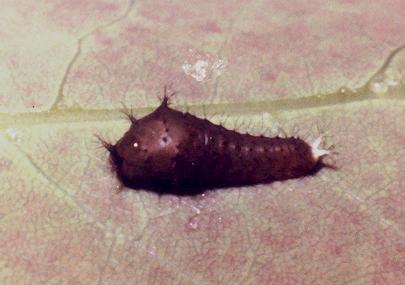
early instar, magnified

| Blue Triangle or Common Bluebottle PAPILIONIDAE, PAPILIONOIDEA | (donherbisonevans@yahoo.com) and Stella Crossley |

early instar, magnified
The caterpillars of this species at first are dark grey and hairy, with a pale yellow tail. As they grow they become green with a humped thorax, tapering from the thorax rearward. The yellow tail develops into a pair of white spikes. Paired dark blue spikes also develop on each of the three thorax segments.

The caterpillar is often found on the introduced
although its other food plants include Australian natives in LAURACEAE such as:
as well as plants in other families such as
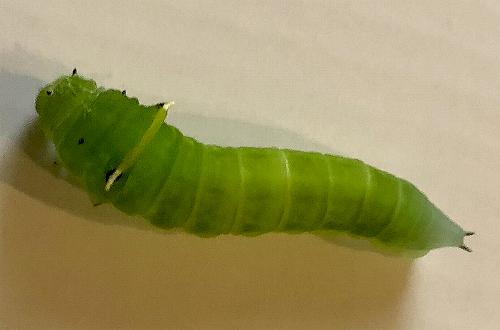
The spikes on the metathorax become longer than the others, and connected by a conspicuous yellow bar. The sides of a mature caterpillar are marked by a whitish line just above the legs. The caterpillar grows to a length of about 3 cms.
When it is disturbed, the caterpillar displays, often rearing up on its rear legs. It may also extrude a pair of pale translucent yellow or green fleshy horns (osmeterium).
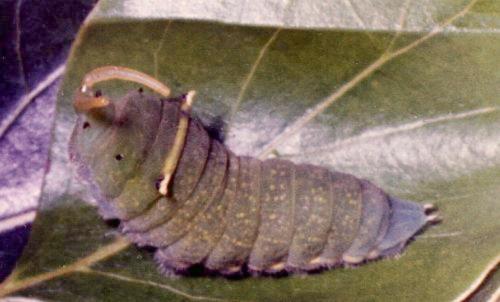
The osmeterium comes from a dorsal pocket in the prothorax, just behind the head. The horns smell strongly of camphor, and are retracted quickly after a second or two.
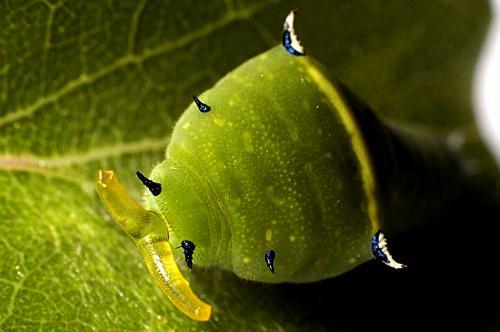
The caterpillar pupates on a leaf of the food plant. The pupa is green with a few yellow lines that converge to a spike on its head. The pupa is held by a silk girdle around the middle, and a cremaster at the tail. The colour of the pupa takes on the same shade as the leaf it is on.

Within three weeks in summer, the adult emerges, having a wing span around 7 cms.
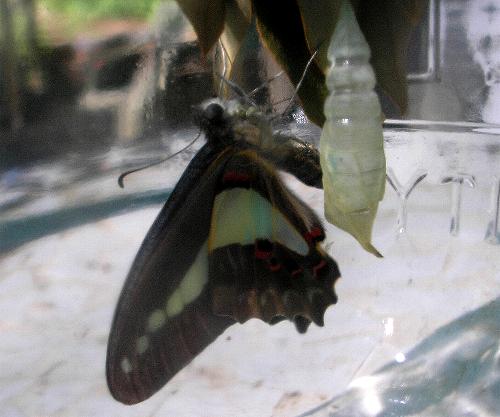
The wings are black above and brown below, with large turquoise patches in the middle of both fore and hind wings. These patches seem to form a triangle, with the apex pointing towards the body.
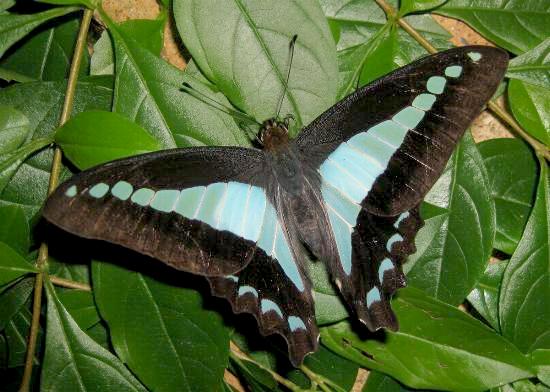
The underside of the wings are similarly marked with turquoise patches, and each hind wing has some red dots on its underside.
Specimens reared in captivity are usually smaller and not as blue as wild forms. The reason for this is unclear: perhaps sunlight is necessary for maximum growth and full pigment development.
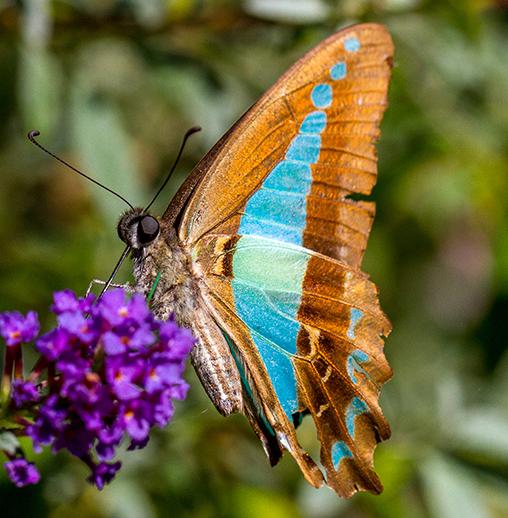
The eggs are off-white and spherical, with a diameter of about 1 mm. They are laid singly. The female butterfly is quite particular, usually only laying each egg on a leaf of a foodplant. Occasionally however she makes a mistake, and we have found the eggs on
on which the young caterpillars cannot always successfully develop.
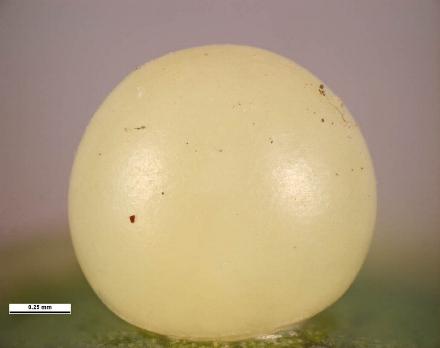
The species is found in Australia in:
After Gray (1853): this species was thought to be a subspecies of Graphium sarpedon, although C. & R. Felder (1864) gave it the separate name choredon. However: DNA studies by Page and Treadaway (2013) have proved Graphium choredon to be a separate species.
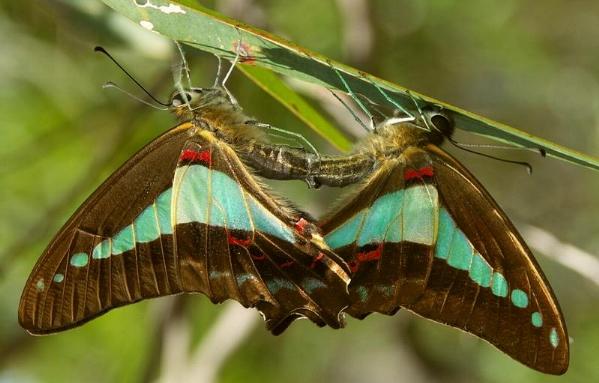
This species is featured at Coffs Harbour Butterfly House. Butterflies of this species may be purchased for release at weddings etc.
Further reading :
Michael F. Braby,
Butterflies of Australia,
CSIRO Publishing, Melbourne 2000, vol. 1, pp. 259-260.
Baron Cajetan & Rudolf Felder,
Species Lepidopterorum hucusque descriptae vel iconibus expressae in seriem systematicam digestae,
Verhandlungen der Zoologisch-Botanischen Gesellschaft in Wien,
Band 21 (1864), p. 305, No. 218.
George Robert Gray,
Lepidopterous Insects : Papilionidae,
Catalogue of Lepidopterous Insects in the Collection of the British Museum,
Part 1 (dated 1852, issued 1853), p. 28, No. 135 b,
and
Plate 4, Figure 1.
Frank Jordan & Helen Schwencke,
Create More Butterflies : a guide to 48 butterflies and their host-plants
Earthling Enterprises, Brisbane, 2005, p. 7.
 caterpillar |  butterflies |  Lepidoptera |  moths |  caterpillar |
(updated 15 March 2013, 12 May 2015, 9 June 2020, 4 September 2021)